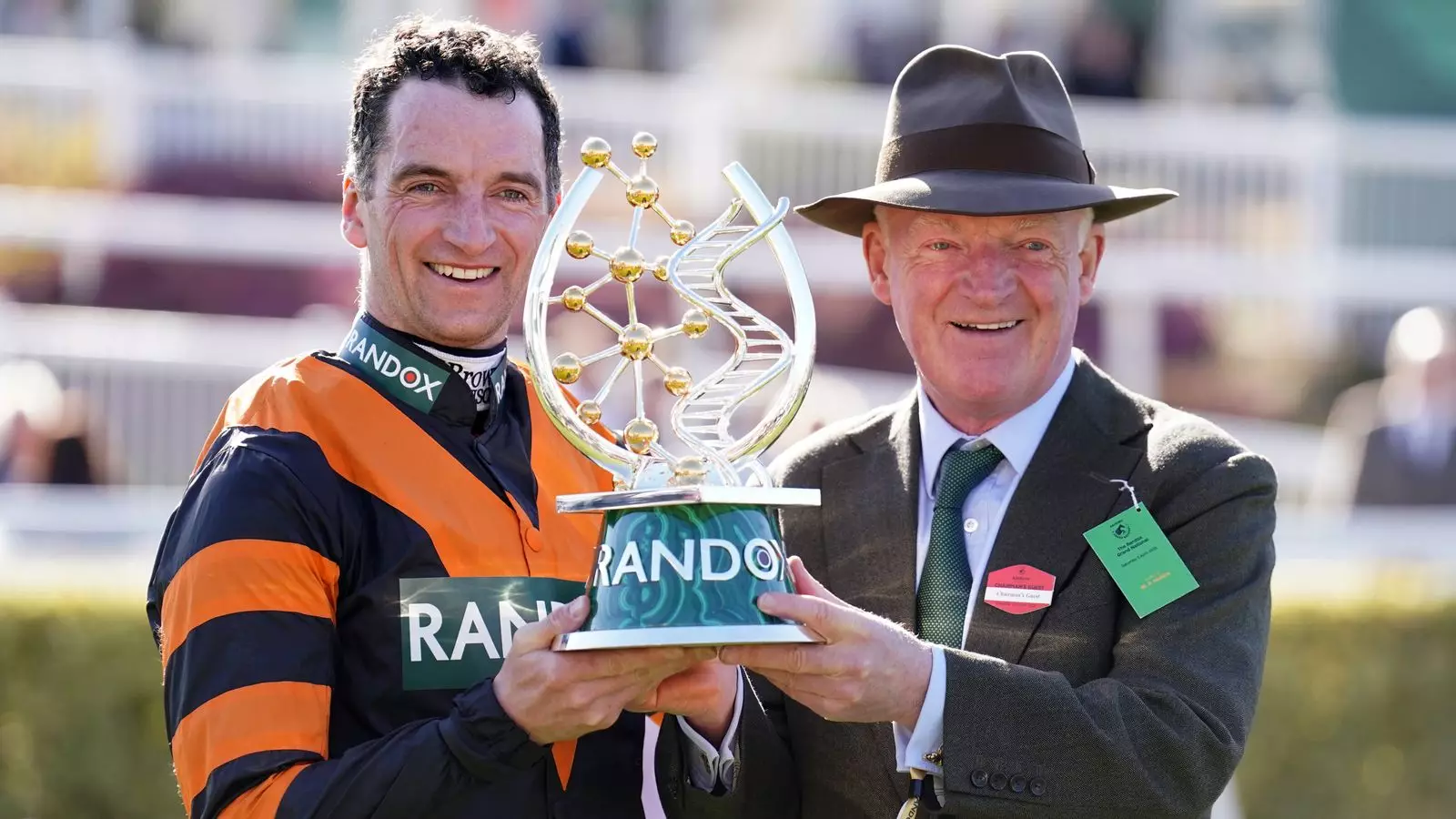In the kaleidoscopic world of horse racing, the Grand National holds an unparalleled stature, a raw tapestry of triumph and defeat woven across the decades. This year, the iconic race saw Irish amateur rider Patrick Mullins ascend to glory aboard Nick Rockett, a 33/1 shot trained by none other than his father, Willie Mullins. The palpable excitement at Aintree, where approximately 70,000 spectators congregated, was electrifying, reflecting not just the spectacle of the race but the deep-seated familial bonds that underpin it.
Willie Mullins, a titan in this sport, celebrated yet another crowning moment. It isn’t merely a professional achievement; it’s the continuation of a legacy that he is crafting with each gallop, each jump. Patrick’s stunning victory, complemented by the second-place finish of I Am Maximus and the third-place Grangeclare West—both trained by his father—cements Mullins Sr.’s dominance. This 1-2-3 finish was not just a victory; it was a manifesto of Mullins’ exceptional skill in nurturing equine excellence. Yet, as gleeful as the outcome may be, one cannot overlook the backdrop of sacrifice and the emotional weight intertwined with racing’s notoriously vicious cycle.
In the Shadow of Loss
One of the most poignant stories intertwined with this win is that of Stewart Andrew, the owner of Nick Rockett, who is navigating the turbulent waters of grief. Andrew recently lost his wife, Sadie, days after witnessing the horse’s first race. His heartfelt assertion, “Sadie would have loved today,” pierces through the celebratory façade, layering the event with a somber depth. It serves as a stark reminder of the duality of life—a celebration of victory shadowed by the agony of loss.
This intersection of joy and sorrow is emblematic of the Grand National’s history. For every moment of jubilation on the turf, there are countless undercurrents of tragedy, as some horses have not lived to tell their tales. The precarious nature of the race, with its daunting obstacles, begs the question: What price are we willing to pay for such thrill? While Willie Mullins reveled in this latest chapter of success, one must ask whether such circumstances spur substantive discourse around the ethics of horse racing—a sport lingering perilously atop the fine line between tradition and modern morality.
Reassessing Safety in the Sport
The Grand National has often been criticized for its association with danger, and the narrative doesn’t solely reside with the thrilling spectacle. Reports have circulated regarding the high incidence of injuries and fatalities, leading many to muse that racing, as a time-honored tradition, must evolve or perish. In response to concerns about animal welfare and participant safety, significant changes were introduced last year, aiming to mitigate peril. The decision to reduce the number of competitors and alter fence heights signifies an acknowledgment of this grim reality, but does it truly equate to progress, or is it merely an act of superficial change?
Critically, while the new measures represent a step in the right direction, one must remain vigilant about the sport’s fundamental nature. Can the excitement of the race reconcile with ethical considerations surrounding the care of the horses and jockeys? The concern persists that for every win or loss, we are dancing with danger on this historical battleground of speed and skill.
A Cliché Made Real
For Patrick Mullins, winning the Grand National was the culmination of dreams since childhood. Standing in the winner’s circle, he expressed, “It’s everything I’ve dreamed of since I was a kid…” Yet, amidst his elation, one senses the weight of legacy—the Mullins name no longer merely represents a hallmark of quality racing, but a rich tapestry of dreams woven with relentless effort and the inevitable heartache of losing.
As we celebrate victories like Mullins’ while grappling with the darker truths of the sport, we must acknowledge the expansive crowd at Aintree. A conflux of voices echo—from jubilant cheers to whispered fears—calling for careful reflection. While racing has captured our attention for centuries, it stands at a crossroads. Will it prioritize the thrill of the race, or will it rise to confront the evolving moral landscapes that challenge its very foundation?

